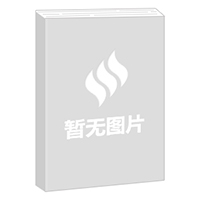涂層.澆注成型.反應注射成型.旋轉成型-塑料技術手冊-2-影印版 版權信息
- ISBN:9787560350479
- 條形碼:9787560350479 ; 978-7-5603-5047-9
- 裝幀:一般膠版紙
- 冊數:暫無
- 重量:暫無
- 所屬分類:>>
涂層.澆注成型.反應注射成型.旋轉成型-塑料技術手冊-2-影印版 內容簡介
《塑料技術手冊 涂層·澆注成型·反應注射成型·旋轉成型(2 影印版)》提供了一個將會、實用、和創新的方法來了解塑料制品的設計和制造。它將擴大讀者的理解塑料技術通過定義和專注于過去,現在,和未來的技術發展趨勢。塑料的行為提出了以幫助讀者制造產品滿足性能標準,低成本的需求,和盈利能力的目標。綜述了不同塑料制品獲得很好的理解行為如何影響性能和成本效率。例子包括玩具、醫療器械、汽車、船只、水下設備、容器、彈簧、管道、建筑和飛機。功能性行為也解釋了熱塑性塑料、彈性體、增強塑料,和其他常見塑料,連同他們的許多制造過程(擠出,注塑,吹塑成型,發泡,反應注射成型和旋轉成型)。這種材料提出了這兩種技術和非技術讀者能理解材料過程的相互關系。作者檢查不同的塑料制品和相關的關鍵因素,從滿足性能需求在不同的環境下降低成本和零缺陷的目標。
涂層.澆注成型.反應注射成型.旋轉成型-塑料技術手冊-2-影印版 目錄
TABLES
ABBREVIATIONS
ACKNOWLEDGMENTS
PREFACE
ABOUT THE AUTHORS
10.COATING
OVERVIEW
Different Coating Aspect
TERM AND PERFORMANCE INTRODUCTION
Paint
Water—Based Paint
Varnish
Lacquer
Solvent
PROPERTIES OF PLASTICS
Thermoplastic Coating
TS Coating
FUNDAMENTALS OF RESIN FORMATION
Condensation Type
Addition Type
Fluorine—Containing Resin
Acrylic Resin
Ceiiulosic Resin
Copolymer Rcsin
Coumaronc—Indene Resin
Parylcnc
APPLICATION
Coil Coating
Strippable Coating
Germ—Free Coating
EVALUATION METHOD
PROCESS
Overview
Film Solidification
Coating Methods
Coating Equipment
Roll—Coat Finish
Spread Coating
Floating Knife Coater
Fluidized Bed Coating
Spray Coating
Powder Coating
Electrostatic Spraying
Coil Coating (Metal Coating)
PROPERTY
Corrosion and Chemical Resistance
Fire Retardant
Intumescent Coating
Heat Resistant
Thermal Control
Electrical Insulating
SIMULATED SERVICE TESTS
Abrasion Resistance
Adhesion
Accelerated Aging in Hot Air
Accelerated aging in oxygen
Blocking
Burst Strength
Compression Set
Curl
Elongation
Flame Resistance,Vertical
Flexibility
Hardness
Hydrostatic Resistance
Low Temperature Cracking
Modulus
Gas Permeability
Liquid Permeability
pH Value
Resiliency
Stretch
Swelling
Tear Strength
Tensile Strength
Thickness
Wicking
Weathering
SOLVENT AND COATING
Solvent Composition in Coating
Solvent and Solvent—Free Coatings
Emission
Clean Air Act
SOLVENT SUBSTITUTION
11.CASTING
INTRODUCTION
PLASTIC
PROCESSES
CASTING OF ACRYLIC
Introduction
Casting Sheet
Casting Rod and Tube
Embedment
Filled Casting
Prototype Casting
CASTING OF NYLON
Introduction
Process
SOLVENT CASTING OF FILM
12.REACTION INJECTION MOLDING
INTRODUCTION
EQUIPMENT
MOLD
Runner and Gatc Design
Cost
PROCESSING
Process Control
MATERIAL
Conversion Process
TP Polyurcthanc
TS Polyurcthanc
Cure of'TS
Polymerization
RRIM and Resin Transfer Molding
COSTING
13.ROTATIONAL MOLDING
INTRODUCTION
PROCESS
PLASTIC
PLASTIC BEHAVIOR
Effect of the Thermal Treatment
Effect of Pigmentation ancl Mixing Method
Conclusion
PERFORMANCE
MACHINES
MOLD
DESIGN
PRODUCTION AND COST
涂層.澆注成型.反應注射成型.旋轉成型-塑料技術手冊-2-影印版 節選
《塑料技術手冊 涂層·澆注成型·反應注射成型·旋轉成型(2 影印版)》: Thixotropy is a property of a plastic that is a gel at rest but liquefies upon agitation.and loses viscosity under stress.Liquids containing suspended solids are likely to be thixotropic.They have both high static shcar strength and low dynamic shear strength.For example, these materials have the capability to bc applicd on a vertical wall and through quick curing action remain in position during curing. All dispersion coatings must bc properly baked or fused in order to coalesce the tiny dispersed resin particles into a continuous, tough, and flexible film.Depending on formulation and dwell time, the required fusing tempcratures (based on actual metal temperatures) vary from 300°F to 525°F (149℃ to 275℃).The pref'crred cycle for sheet bakes is 10 minutes in the 350°F to 525°F (177℃ to 275℃) range.In moving—web application (coil or strip coating), a cure cycle of 60 seconds or less at about 525°F yields good results.These cited examples, of course, are for vinyl chloride dispersion systems.Fluorinated dispersion coatings require substantially higher temperatures (approximately 550°F to 600°F (288℃ to 316℃)) for proper film formation. Since fusion of the dispersed particles is the major objective in the curing procedure, the baking cycle for a given application depends on how quickly the wet film reachcs fusing tempcraturc.When this critical temperature is reached, the tiny, partially solvated particles quickly coalesce into a homogeneous coating.Problems of thermal degradation will occur if the coating is subjectcd to tempcratures in excess of 500°F (260℃) for vinyl chloride dispersion; degradation will occur at tcmperatures in excess of 600°F (316℃) for vinyl or vinylidene fluoride dispersions for prolonged periods. ……
- >
回憶愛瑪儂
- >
朝聞道
- >
煙與鏡
- >
有舍有得是人生
- >
姑媽的寶刀
- >
羅曼·羅蘭讀書隨筆-精裝
- >
龍榆生:詞曲概論/大家小書
- >
山海經


















